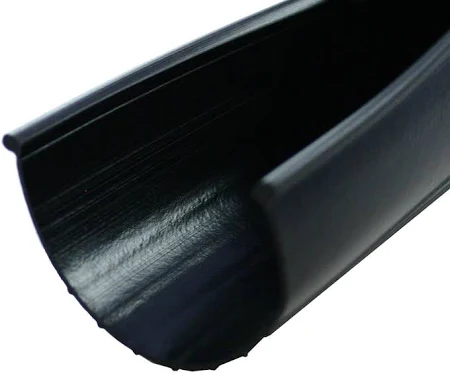Types of Garage Door Weather Seals
Protecting your garage from the elements is crucial to maintain its functionality and longevity. One of the most effective ways to achieve this is by using weather seals designed specifically for garage doors. In this article, we’ll take a deep dive into the various types of garage door weather seals and discuss how to choose the right one for your specific needs.
Weather Seal for Wooden Garage Doors
Wooden garage doors are popular for their classic aesthetic and durability. However, wood is susceptible to damage from the elements, especially moisture, which can cause warping and rotting. This is where weather seals come in.
For wooden garage doors, consider using a thermoplastic or rubber weather seal. These materials are resilient against moisture and can form a tight seal against the garage door, preventing water intrusion. Additionally, they are flexible enough to accommodate the natural expansion and contraction of wooden doors caused by changes in temperature and humidity.
 Weather Seal For Metal Garage Doors
Weather Seal For Metal Garage Doors
Metal garage doors, on the other hand, benefit from different types of weather seals. While metal doors are less susceptible to moisture damage, they can still let in drafts and are prone to rust. Vinyl weather seals are an excellent choice for metal garage doors. They are resilient and create a tight seal to keep out drafts, dust, and pests. Additionally, vinyl is resistant to rust, making it a durable option for metal doors.
Rubber vs. Vinyl Garage Door Seals
When choosing between rubber and vinyl garage door seals, it’s important to consider your specific needs and the type of garage door you have. Rubber seals are typically more durable and flexible, making them an excellent choice for wooden garage doors and in areas with severe weather conditions.
Vinyl seals, however, are more resistant to UV rays and are less likely to crack or degrade over time. This makes them a great choice for metal doors and garages in areas with high sun exposure.
Garage Door Bottom Seal Types
The bottom seal is arguably the most crucial weather seal on a garage door. It forms a barrier against water, dust, pests, and drafts entering from under the door. There are several types of bottom seals, but the most common are the T-end, bulb, and bead end seals.
T-end seals have a T-shaped profile and are typically used with a retaining track. Bulb seals have a rounded profile and are excellent for uneven floors. Bead end seals, on the other hand, are designed to fit specific types of garage doors with a bead track.
Choosing the right bottom seal depends on the type of door, the presence and type of a track, and the condition of your garage floor.
Garage Door Side Seal Types
Side seals, also known as weather stripping, are installed on the sides of the garage door. They fill the gap between the door and the frame, preventing drafts and water intrusion. The most common types of side seals are top seal, brush seal, and Jamb seal.
Top seals are used along the top edge of the door, brush seals have a brush edge that forms a barrier against drafts, and Jamb seals are installed on the door jamb to seal the gap between the door and the frame.
While these are common options, the best side seal for your garage door will depend on your specific needs andthe type of door you have.
There are various types of garage door weather seals available, each designed to cater to different needs and types of garage doors. Whether you have a wooden or metal garage door, and whether you’re considering rubber or vinyl, it’s crucial to choose a weather seal that provides the best protection for your garage. At Ex-cello we’re happy to look at your specific situation, make recommendations, and install whatever you need.
Invest in your garage, not only will it enhance your garage’s durability, but it will also improve energy efficiency and comfort in your home. So, why wait? Let us help you start protecting your garage today!


